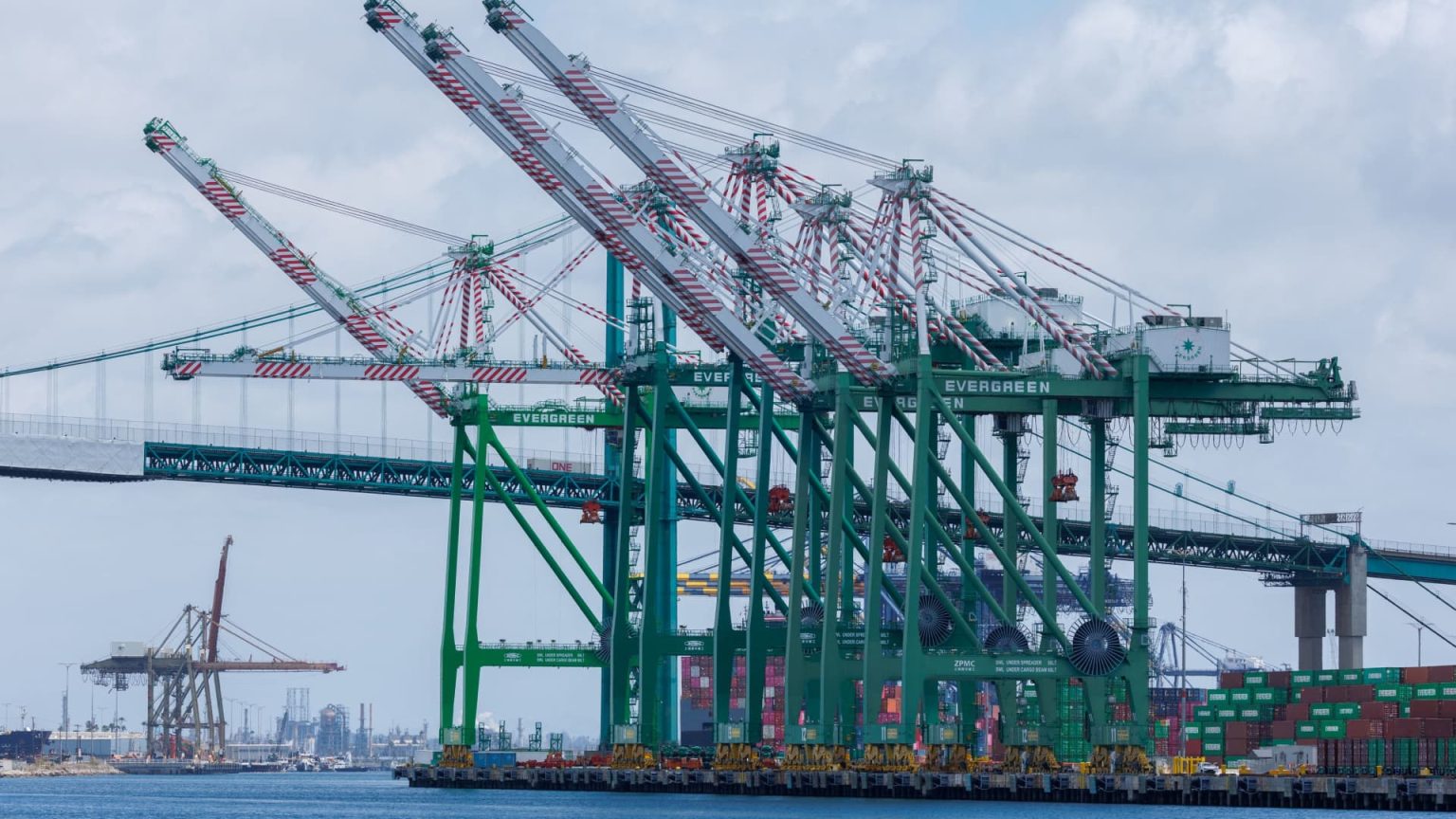In a significant shift, the U.S. trade deficit with its global partners plummeted in April, marking the largest single-month decrease recorded. This reduction, attributed to a slowdown in imports following President Donald Trump’s tariffs, presents a complex picture of the nation’s economic landscape. According to a report by the Commerce Department, the deficit fell to $61.6 billion, a staggering decline from the previous month that defied expectations.
| Article Subheadings |
|---|
| 1) Impact of Tariffs on Trade Deficit |
| 2) April Trade Numbers: A Closer Look |
| 3) Expert Analysis on Trade Imbalances |
| 4) Long-term Implications for the Economy |
| 5) Future of U.S.-China Trade Relations |
Impact of Tariffs on Trade Deficit
The substantial drop in the trade deficit can largely be attributed to the tariffs implemented by President Trump. Announced as part of his broader strategy to address perceived trade imbalances, the tariffs initially incited a rush among companies and consumers to import goods before they took effect. However, as the reality of these costs set in, many businesses have begun to slow their import activities. The dramatic 16.3% decrease in imports reports this April highlights the swift changes prompted by the new tariffs. These tariffs, initially set at 10% across the board for imported goods, have led to significant adjustments in trading patterns, further complicating already tense international relationships.
April Trade Numbers: A Closer Look
In April, the trade deficit recorded a remarkable decline, falling to $61.6 billion from a previous figure that had met with grim forecasts. The expectation among analysts was that the deficit would hover around $66.3 billion. However, the reported figures revealed a stark reality with a reduction of $76.7 billion from the previous month. A notable shift in trading dynamics resulted in imports plummeting to $351 billion. Simultaneously, exports saw a modest increase of 3%, a positive sign amidst the chaos of changing trade regulations. The export figures demonstrate resilience in U.S. goods globally, even while the market adjusts to the new tariff regime.
Expert Analysis on Trade Imbalances
Experts have noted that while a trade deficit often carries negative connotations, the current scenario warrants a more nuanced interpretation.
“Deficit implies something bad, but in this case the story is more nuanced…”
explains Elizabeth Renter, a senior economist at a consumer advocacy site. She emphasizes that international trade can be beneficial for the U.S. economy. The trade relationship encourages domestic consumption and supports a variety of sectors. Renter urges caution when interpreting the latest decline as an outright positive development. The implications of these tariffs and trade adjustments could extend beyond immediate metrics, affecting employment rates and industry stability over the long run.
Long-term Implications for the Economy
The ongoing shifts in trade policy imply long-lasting transformations in the economic fabric of the country. The $61.6 billion deficit reflects not just annual cyclical trends but can also impact year-to-date comparisons, showing a staggering 65.7% increase over the same period from the previous year. Such numbers provoke questions regarding sustainability in the U.S. manufacturing industry, consumer spending behaviors, and the strategic maneuvers U.S. firms must undertake in response to foreign competition. As the market adjusts to tariffs and trade agreements, businesses must implement more agile practices, adapting to new cost structures while maintaining their competitiveness.
Future of U.S.-China Trade Relations
In a recent development, President Trump indicated ongoing dialogues with China regarding trade relations. During a 90-minute conversation with Chinese President Xi Jinping, Trump termed the interaction as “very good,” hinting at possibly fruitful negotiations ahead. The largest trade imbalance remains with China, amounting to $19.7 billion. Moving forward, the focus will likely be on balancing not just trade numbers, but also diplomatic relationships, as both nations navigate a complex interplay of economic pressures and strategic interests. Anticipation surrounds how these negotiations unfold and their impact on global trade dynamics.
| No. | Key Points |
|---|---|
| 1 | U.S. trade deficit dropped to $61.6 billion, marking the largest single-month decrease. |
| 2 | Imports fell sharply by 16.3% due to tariffs, while exports rose by 3% in April. |
| 3 | The change challenges conventional views on the implications of trade deficits. |
| 4 | Long-term impacts on U.S. manufacturing and consumer behavior are expected as markets adjust. |
| 5 | Engagement in negotiations with China continues amidst ongoing trade tensions. |
Summary
The recent plunge in the U.S. trade deficit underscores the significant impacts of tariff policies on international commerce. As the economic landscape evolves, balancing trade relations and addressing domestic economic stability will require continuous evaluation. The future of U.S.-China relations remains uncertain, with further negotiations potentially affecting both countries and the global economy. As businesses navigate these changes, the implications for domestic markets and consumer behavior will be critical.
Frequently Asked Questions
Question: What is the current U.S. trade deficit?
The current U.S. trade deficit stands at $61.6 billion as of April, reflecting a significant decrease from the prior month.
Question: How have tariffs affected trade in the U.S.?
Tariffs have led to a sharp decline in imports, prompting companies to reassess their trading strategies and adapt to new cost structures.
Question: What are the implications of a shrinking trade deficit?
While a shrinking trade deficit may seem positive, it can complicate the economic landscape and impact sectors that rely heavily on foreign trade.


